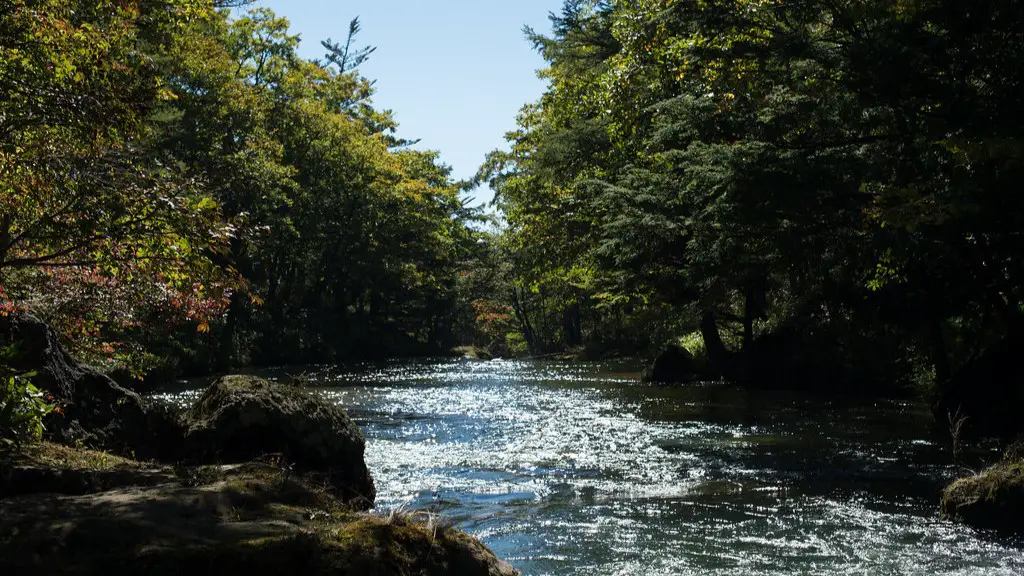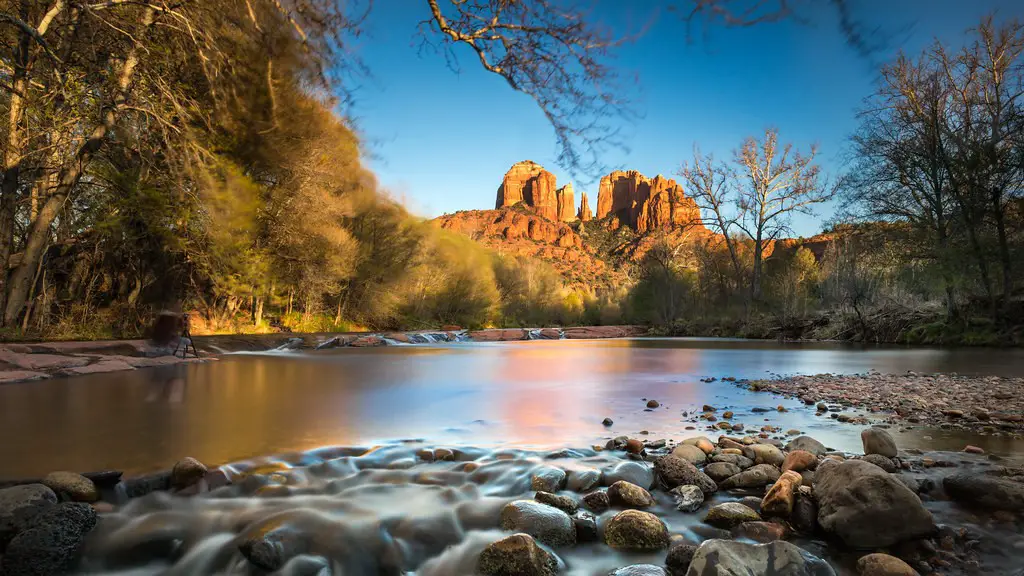From its headwaters in the Qinghai-Tibet Plateau, the Yangtze River stretches over 6000 km through 7 provinces and over 300 cities before reaching the East China Sea at Shanghai. This lifeblood of China has been put to use from the stone age. It has nourished the nation and sustained its economic, cultural and political development for thousands of years.
For centuries, the Yangtze supported the development of civilizations in China. Stone tools dating back over 15,000 years have been found near the mouth of the river. In ancient times, the Yangtze provided an important waterway for transport, trade and commerce between cities and regions. In periods of war, the river was a primary means of defense and transportation of troops, providing strategic advantage and military strength.
In modern times, the Yangtze has played an important role in China’s rapid economic growth. It provides water for agricultural use and is a major source of hydroelectric power, generating more than 75 percent of the country’s total power. The Yangtze is also an important industrial zone, providing the means to generate hundreds of industries, including manufacturing, trading, shipping and transportation. For example, cities along the river are major hubs of the Chinese electronics industry.
Today the Yangtze is experiencing development and change as it is an important economic asset for the country. It also serves for flood control, hydroelectric power production, navigation and tourism. The river is a major source of fresh water, providing both drinking water and water for agriculture. In addition, the Yangtze serves as a major transport route for goods and people, connecting the major economic and population centers of China.
The Yangtze is also an important source of biodiversity and conservation, boasting a unique and diverse ecosystem and unique species. The river is home to some 300 species of crustaceans, 190 species of fish, more than 600 types of migratory birds, 250 types of mammals, 200 species of plants and more than 1,000 types of algae. The Yangtze is also recognized globally as having amazing, historically significant sights such as the Three Gorges and the Three Gorges Dam.
China’s Yangtze River plays an essential role in the nation’s development and growth. The river is a major source of drinking water and power, an important transportation pathway and a major source of biodiversity and conservation. In the coming years, the Yangtze will continue to provide benefits to the Chinese people and the global environment, ensuring a bright and prosperous future for generations to come.
Climate Change
The Yangtze River is one of the most vulnerable rivers to the impacts of global climate change. In recent years, droughts, floods, and extreme weather events have been recorded more frequent and powerful along the river. Consequently, there is a greater risk of water scarcity, water-related disasters, land degradation and loss of agricultural production. Climate change is also leading to an increase in water temperature, affecting the habitats of species that live in the Yangtze.
To mitigate the impacts of climate change, the Chinese government has set up programs and regulations to protect the river. It has also invested heavily in green technologies to increase the river’s resilience to climate change impacts. In particular, it has invested in hydropower technology and water management strategies such as irrigation, reforestation and riverbank protection.
Despite the government’s efforts, the Yangtze remains a concerning environment due to climate change. It is essential that the Chinese government continue to invest in innovative and sustainable solutions to protect the river and its ecosystem.
Water Pollution
The Yangtze River has been facing a major challenge from pollution, due to the rapid economic growth and population expansion of China. Pollutants from factories, agricultural activities, mining and climate change are causing water pollution, threatening aquatic life and public health. The river also contains high amounts of nutrients and heavy metals that contaminate the water supply and cause algal blooms.
To address this problem, the Chinese government has implemented stringent laws and regulations, such as the Water Pollution Prevention and Control Law and the Water Pollution Control Action Plan. It has also increased efforts to reduce emissions from industries and promote the use of green technologies. In the last few years, the government has also invested in wastewater treatment plants and technologies to reduce water pollution.
The Chinese state has made great progress in addressing water pollution, yet the Yangtze River remains one of the most polluted rivers in the world. It is essential that the government continue to invest in anti-pollution initiatives to protect the river and its ecosystem for future generations.
Economic Growth
The Yangtze River has been playing a key role in China’s rapid economic growth in recent years. The river has been an important waterway for transportation, trade and industry, connecting major cities and regions. In addition, the Yangtze has been a major source of hydroelectric power, accounting for over 75 percent of the country’s total power. In recent years, many investment projects and businesses have been established along the river.
The Chinese government is investing heavily in the development of the Yangtze River Economic Zone (YREZ). The YREZ is expected to become the world’s largest economic zone, covering almost 1.5 million square kilometers. The government is investing in various initiatives to promote economic development, such as transport infrastructure, energy facilities, tourism, financial and logistics services, and cultural and ecological protection.
Despite the economic development, it is essential that the Chinese government protect the Yangtze’s natural environment and ecosystems. The future of the river and its economic development largely rests on managing the impact of human activities on the environment.
Environmental Protection
The Yangtze River is facing serious environmental challenges due to urban expansion, pollution and climate change. There is an urgent need to protect the river and its ecosystems, as they are essential for the livelihoods of the people and the nation’s development. Intensive human activities such as industrial and agricultural activities are putting increasing pressure on the Yangtze’s resources and its environment.
The Chinese government has taken steps to protect the river’s environment, including setting up programs and regulations to govern environmental protection and green technologies. The government is also investing heavily in ecological restoration projects to improve the Yangtze’s water quality and conserve its terrestrial and aquatic ecosystems. For example, it has established wetland parks and protected areas and is increasing its investments in green technologies.
Despite the government’s effort, the Yangtze River remains heavily polluted and provides inadequate protection to its environment. There is an urgent need for the Chinese state to promote and invest in sustainable solutions to protect the river and its ecosystems for future generations.
Local Communities
The communities that depend on the Yangtze River are facing great challenges due to environmental degradation and shrinking resources. Furthermore, the impact of climate change, water pollution and unsustainable development is increasing pressure on the local communities who depend on the river for their livelihoods and wellbeing.
The Chinese government has set up programs to address the needs of the local communities who are affected by environmental degradation. It has invested in health and education programs, as well as sustainable livelihood initiatives. In particular, the government has established community-based organizations to improve the livelihoods of local people affected by the deterioration of the Yangtze’s ecosystems.
Despite the efforts of the Chinese government, the local communities are still struggling with the impact of environmental degradation and climate change. It is essential that the government invest in sustainable strategies to help the local communities and their livelihoods. This includes investing in resource management, green technologies and sustainable livelihood initiatives.





